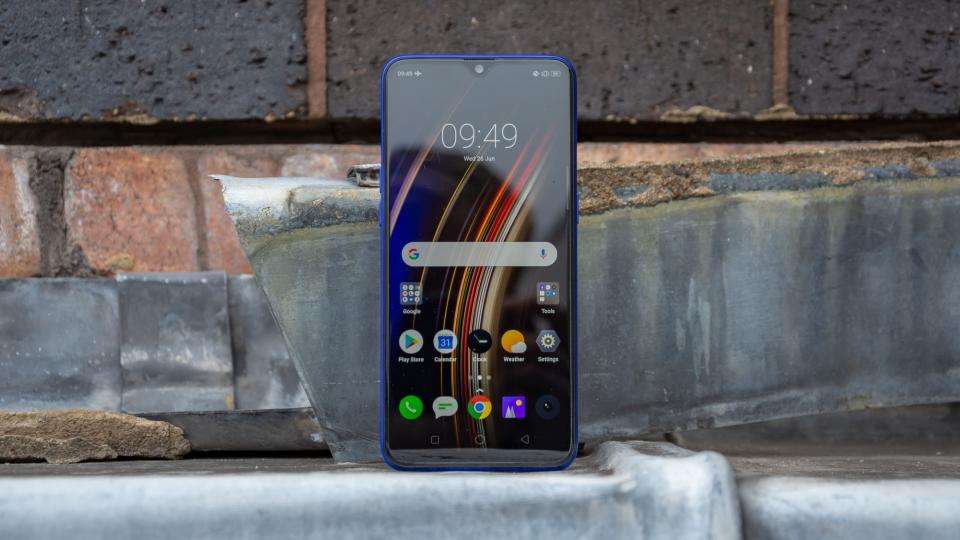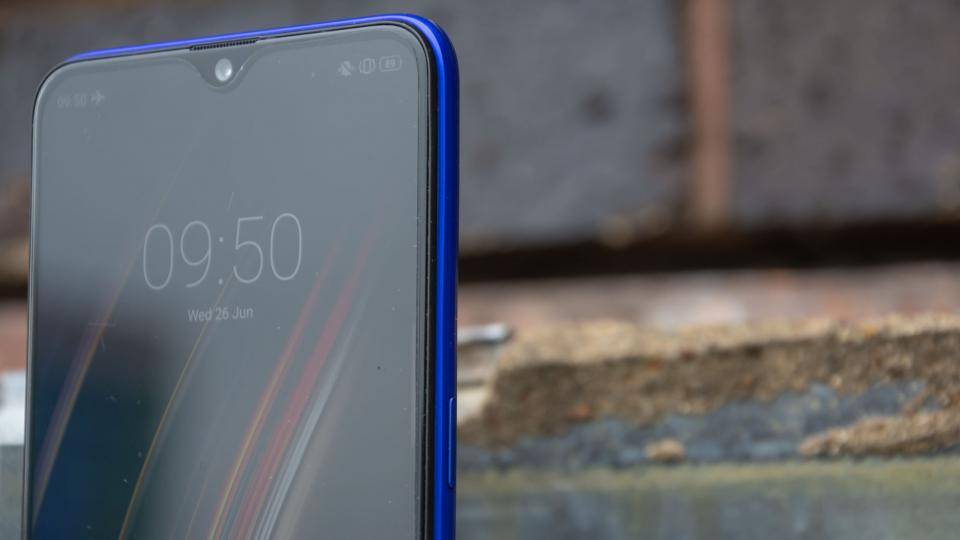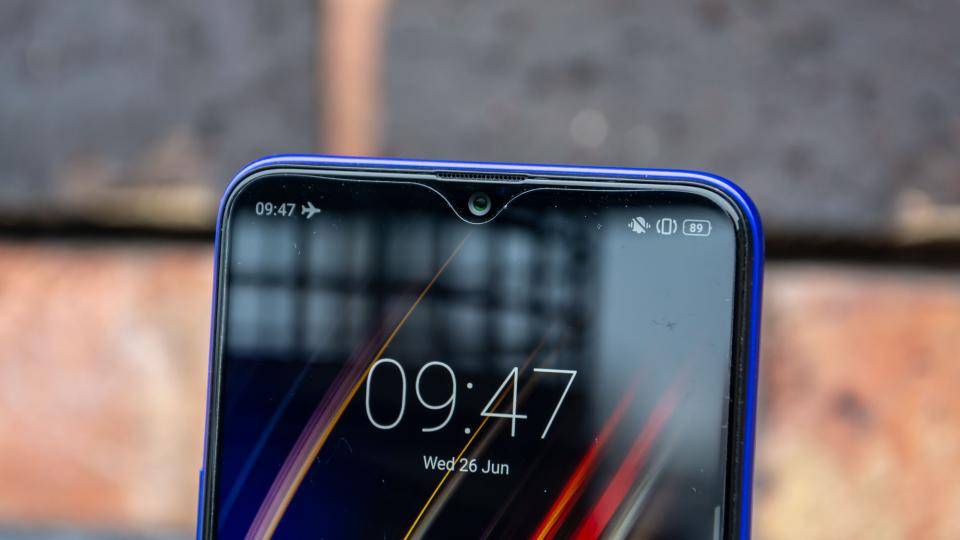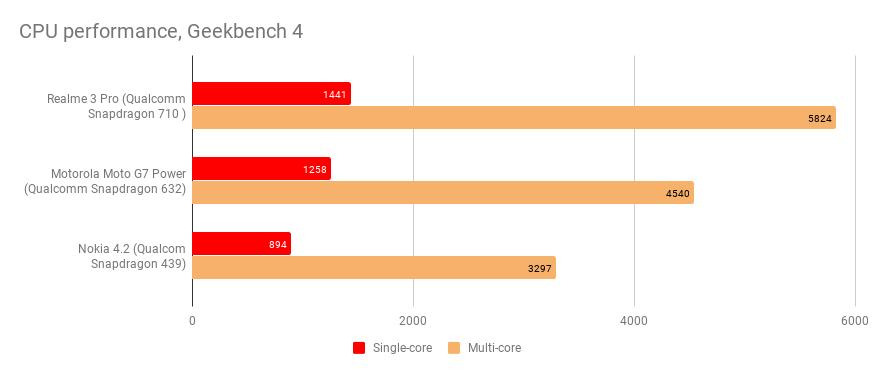Realme 3 Pro review: The best budget phone you’ve probably never heard of
Chinese smartphone manufacturers are under the microscope at the moment , but that hasn’t prevented yet another Asian brand from making its first appearance in the UK. But the Realme 3 Pro isn’t just some me-too budget phone – simply going by the specifications at least, it seems to hold the potential to completely shake up the budget smartphone scene.
READ NEXT: Best budget smartphone
Realme 3 Pro review: What you need to know
Rather than make do with the usual cost-cutting tricks, Realme’s first proper smartphone to arrive in the UK is filled to the brim with top-end specifications and features. It has a massive 6.3in Full HD screen, can be configured with up to 128GB of expandable storage, and is powered by Qualcomm’s new Snapdragon 710 chipset – the same processor inside the Google Pixel 3a , which costs more than twice the price.
But the goodies don’t stop there. It’s also running Google’s latest version of its widely-used mobile operating system, Android 9 , with the ColorOS 6 software overlay placed on top. There’s even a dual camera array on the back of the phone; not something you can take for granted even when you pay more.
Realme 3 Pro review: Price and competition
At only £175 for 4GB of RAM and 64GB of storage and a mere £219 for an upgraded 6GB of RAM and 128GB of storage, the Realme 3 Pro has all the necessary credentials to become the first tangible threat to Motorola and Honor.

This represents stonkingly good value for money, and there’s currently very little else on the market that can compete with what the Realme 3 Pro has to offer. The similarly-priced Moto G7 Power is perhaps its biggest rival, but with a smaller, lower resolution screen and slower processor, it isn’t anywhere near as good.
Realme 3 Pro review: Design and key features
At this sort of price, you’re not getting flagship-style design, but Realme seems to have made cuts in most of the right places. The rear panel, for instance, might not be made from glass, but the way it’s patterned still looks pretty good, with subtle lines sweeping across the phone from top to bottom, giving it a two-tone colour finish.
Perhaps more importantly, its 6.3in display is covered with a layer of Gorilla Glass 5. Not only does this ensure a modicum of scuff and shatter resistance, but it also means the display feels smooth and slippery to the touch and is easy to keep free of dirt and grime.

A circular fingerprint sensor on the back of the phone is used for secure unlocking, and you can even take advantage of the Realme 3 Pro’s rather speedy facial recognition. Mercifully, it hasn’t followed the annoying design trend of ditching the 3.5mm headphone jack either, which you’ll find at the bottom of the phone, next to the solitary speaker grille.
As with the G7 Power, however, the Realme 3 Pro has no official dust- or water-resistance rating, although that’s no surprise at this price. A bigger problem for the Realme is that it lacks NFC connectivity. That means (in the UK and Europe at least) you won’t be able to use the phone at contactless payment terminals and the like.
Realme 3 Pro review: Display
As I mentioned previously, the Realme 3 Pro’s IPS screen measures a total of 6.3in from rounded corner to rounded corner, and is 2,340 x 1,080 (Full HD+) in resolution, accruing a pin-sharp pixel density of 409ppi. It’s worth remembering that anything higher than 720p is still very unusual for a brand new phone costing less than £200. This is no small feat.
You can’t be too critical of a budget phone but even still, the Realme 3 Pro’s screen is among the best you can get for something as cheap as this. Of course, you can’t expect the same vibrant, HDR-enriching viewing experiences as those OLED-equipped flagships that cost almost four times the price, but for the most part, the Realme 3 Pro’s screen is very good indeed.

When placed under the scrutiny of our screen calibrator, we found that the Realme 3 Pro’s display was capable of producing 98% of the sRGB colour gamut space, with an average Delta E of 2.53. Those aren’t mind-blowing figures, sure, but colours still look about as accurate as that ultra-low price tag allows.
Brightness is rather good too. The Realme 3 Pro is capable of reaching a maximum peak luminance of 465cd/m2 with the adaptive brightness setting switched on, which should help you avoid squinting at the screen on your summer holidays. A high contrast ratio of 1,686:1 also boosts readability.
Realme 3 Pro review: Performance and battery life
The rest of the specification is just as impressive. The Realme 3 Pro runs on a Qualcomm Snapdragon 710 processor, which we last saw powering the mid-range Google Pixel 3a and 3a XL earlier this year. This brand-new 10nm architecture CPU is clocked at a speedy 2.2GHz, which, when paired with a choice of either 4GB or 6GB of RAM, adds up to one of the beefiest budget phones we’ve ever tested.
According to our benchmarks, the Realme 3 Pro is the fastest budget phone that’s ever passed through our doors, reaching single- and multi-core CPU scores of 1,441 and 5,824 in the Geekbench 4 test. That’s mightily impressive, with the Realme 3 Pro supplying 28% faster speeds than the Moto G7 Power under the same conditions.

This sort of improvement makes a huge difference in day-to-day Android operation. Navigating the UI feels smooth and responsive, and switching between multiple applications is as rapid as you’d expect. Even swiping around Google Maps, which is a notoriously tricky test for low-end devices, was relatively painless.
The same applies to the Realme 3 Pro’s gaming capabilities. The GFXBench Manhattan 3.0 on-screen test returned an average frame rate of 29fps, which is miles better than what the Moto G7 Power was able to achieve. It’s not the fastest but for the price, you can do no better.
The Realme 3 Pro can’t quite match the Moto G7 Power’s battery capacity but it’s still pretty big, at 4,045mAh. This supersized battery managed to last a total of 15hrs 34mins before the phone switched off, which is still mightily impressive considering it includes a higher resolution screen. It also supports fast “VOOC” charging, so when battery levels do finally drop to zero, the Realme 3 Pro can charge from empty to 100% in only 1hr 20mins.
Realme 3 Pro review: Software
Unsurprisingly, the Realme 3 Pro uses the Android 9 mobile operating system, but this isn’t a stock software experience. Realme’s budget phone incorporates Oppo’s ColorOS software overlay to tweak the look and feel of Android. Like Samsung’s TouchWiz software, ColorOS includes a nifty floating shortcut sidebar on the right edge of the screen which, when swiped, provides access to your most-used applications.
Other features include the option to hide the navigation keys and replace them with screen gestures, enabling you to launch recent apps, go back and go to the home screen with a few simple swipes from the bottom edge of the screen.
You can access the notification drawer as normal if you swipe down from the top edge of the screen, although this looks similar to Apple’s rigid, blocky arrangement. The phone’s settings toggles are chunky and the brightness slider takes up a big portion of the screen. The Realme also comes preloaded with a few unnecessary third-party apps like Facebook , Opera and Asian shopping app Lazada (which can’t be used in the UK), although these can be removed.
Realme 3 Pro review: Camera
The camera setup on the Realme 3 Pro comprises a dual effort at the rear, with one 16-megapixel f/1.7 camera and a secondary 5-megapixel camera for depth mapping, along with a 25-megapixel f/2 snapper at the front. It’s a surprisingly powerful camera, with the ability to record 4K video footage fully stabilised.
Realme’s camera app is straightforward and easy to use. Swiping left and right cycles between the video, photo and portrait modes, while the settings menu provides the long list of other shooting modes, such as nightscape, panorama, time-lapse and 960fps slow-mo recording.
When it comes to camera quality, the Realme 3 Pro continues to impress, even if the results aren’t quite as good as the Moto G7 Power’s output. The rear-facing cameras draw in plenty of light and reproduce accurate colours, although detail capture is rather soft in comparison to the Moto’s shots. You can see this most clearly in the building scenes, with rooftop slats and chimney bricks looking overly smooth.
I imagine this is the result of a pesky, aggressive noise reduction algorithm, but the images still look very good in almost every other area. Switch on HDR and there’s a better tonal balance throughout the image, with tree foliage that doesn’t seem quite as dark and foreground buildings that look slightly lighter.
The Realme 3 Pro also does a better job at cutting through the darkness as the light dims, with crisp, well-defined details and vivid colours. The image is noisy, however, regardless of whether you use the nightscape shooting mode or not.
Video quality is exceptional, with the option to capture rock-solid, stabilised footage at up to 4K resolution. This high-quality recording is limited to 30fps, but drop the resolution down to 1080p and you can film your summer adventures at a silky smooth 60fps.
Realme 3 Pro review: Verdict
Even if the Realme 3 Pro ended up being a so-so first effort, more choice at this end of the price bracket was always going to be a good thing. Fortunately, the Realme 3 Pro’s feature-rich package provides an exceedingly tempting proposition for the cash. In fact, it’s even good enough to topple the Moto G7 Power off the throne as our favourite sub-£200 smartphone. All in all, that’s quite an achievement.
|
Realme 3 Pro specifications |
|
Processor |
Octa-core Qualcomm Snapdragon 710 (2x2.2GHz, 6x1.7GHz) |
|
RAM |
4GB or 6GB |
|
Screen size |
6.3in |
|
Screen resolution |
2,340x1,080 |
|
Pixel density |
409ppi |
|
Screen type |
IPS |
|
Front camera |
25-megapixel, f2.0 |
|
Rear camera |
16-megapixel f/1.7, 5-megapixel f/2.4 |
|
Flash |
LED |
|
Dust and water resistance |
No |
|
3.5mm headphone jack |
Yes |
|
Wireless charging |
No |
|
USB connection type |
micro-USB |
|
Storage options |
64GB or 128GB |
|
Memory card slot (supplied) |
microSD (up to 256GB) |
|
Wi-Fi |
802.11ac |
|
Bluetooth |
5 |
|
NFC |
No |
|
Cellular data |
4G |
|
Dual SIM |
Yes |
|
Dimensions (WDH) |
157x74x8.3 mm |
|
Weight |
172g |
|
Operating system |
Android 9.0 |
|
Battery size |
4,045mAh |
